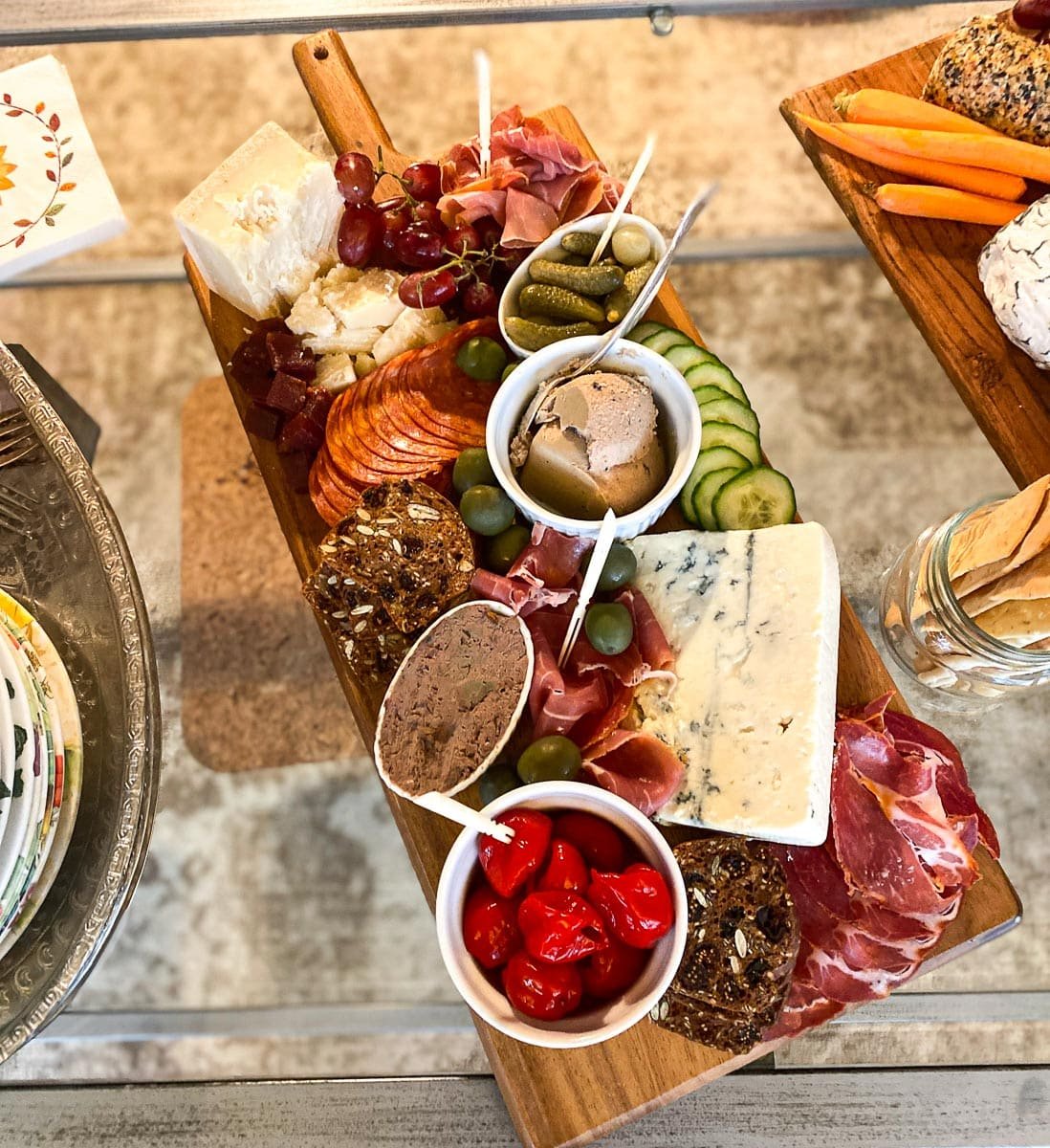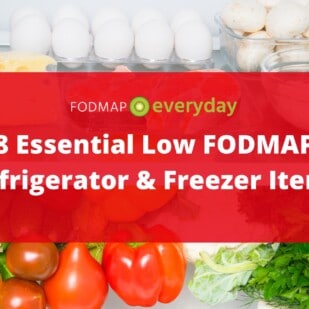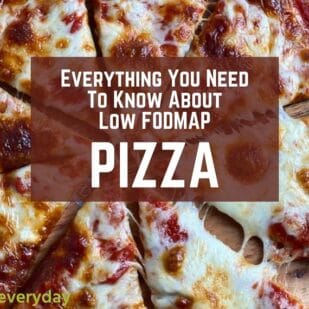Have you been drooling over all the incredible charcuterie and cheese boards on social media and wondered if you could make them low FODMAP? You can, and we are going to show you how. Low FODMAP Charcuterie & Cheese Boards are perfect for entertaining a crowd – especially when you have FODMAPers present as well as people who are not following the diet. There will be something for everyone.
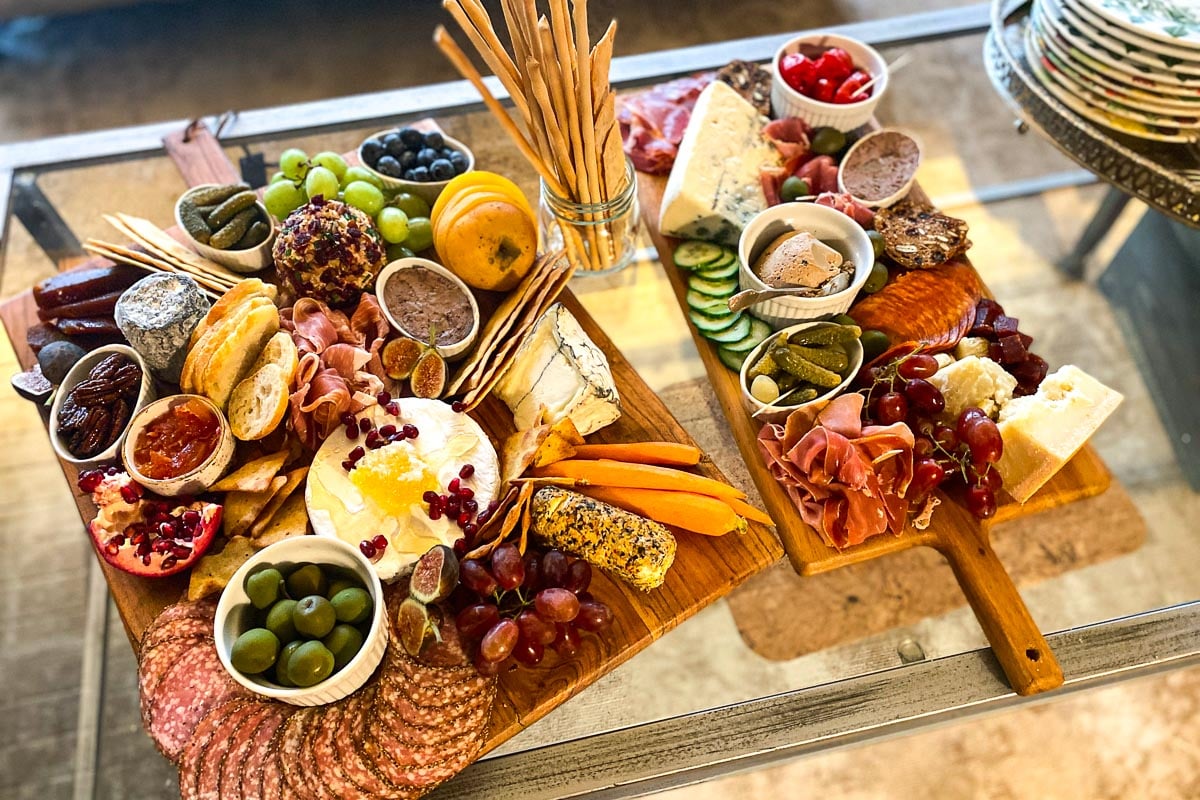
Please do take a look at our article, Is Cheese Low FODMAP?, which will teach you how to tell if any cheese is low FODMAP!
Please note that it is up to you to thoroughly familiarize yourself with the entries in the Monash University Low FODMAP Diet smartphone app and the FODMAP Friendly Low FODMAP Diet smartphone app to determine which of the offerings on your charcuterie and cheese board are low FODMAP, and in which amounts. Also, please review our articles on What Is A Low FODMAP Serving Size? and on FODMAP Stacking.
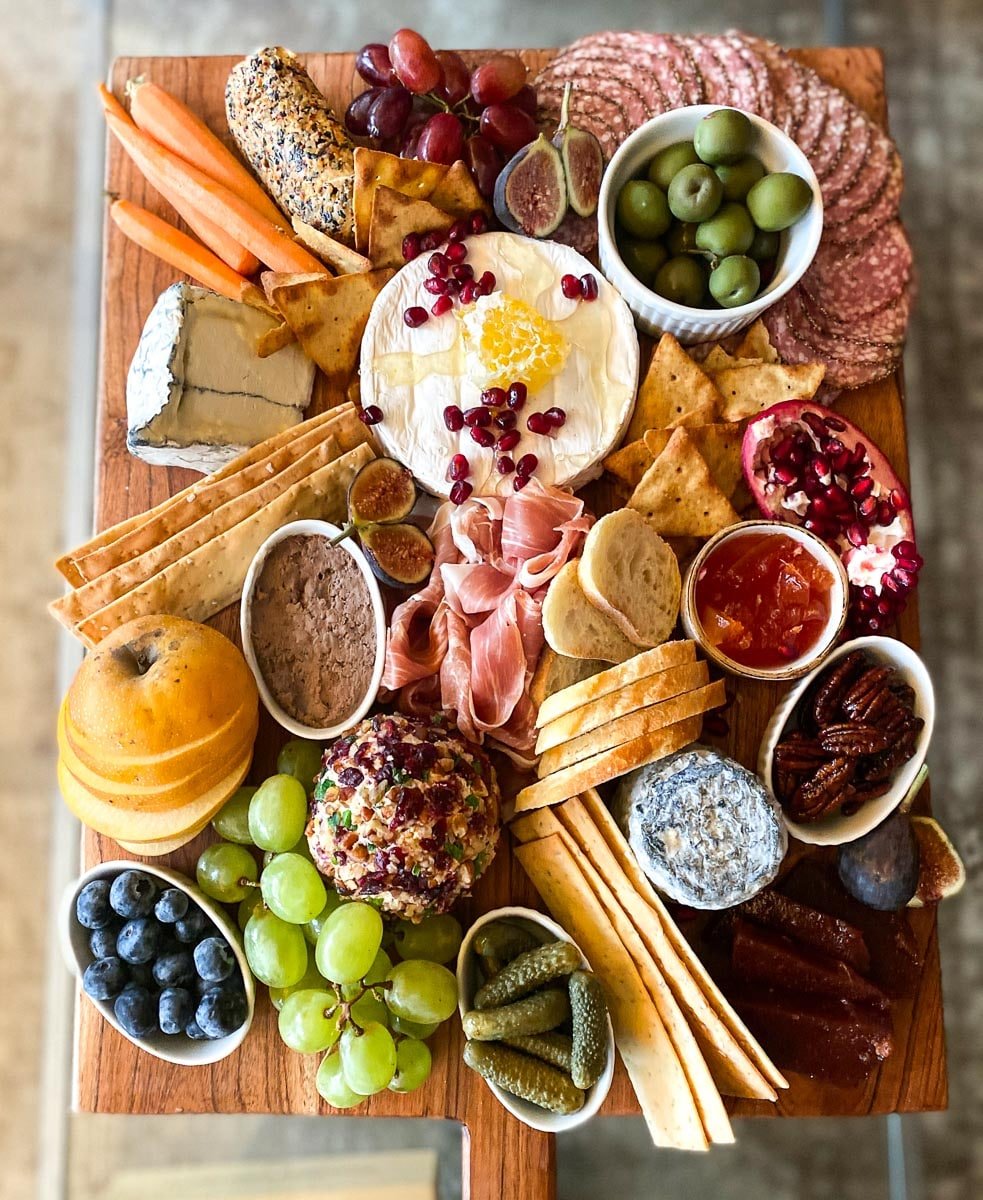
Don’t Forget The Crackers & Bread
You will need to offer crackers and bread along with your charcuterie and cheese. Again, it is fine to have a mixture of both low FODMAP and high FODMAP offerings, and you and any other FODMAPians will just have to know which items are appropriate for you.
We have an excellent article, How To Choose Low FODMAP Bread, which will help you immensely in knowing which bread is appropriate. Also, remember, that traditional wheat bread, according to Monash University FODMAP lab testing, is low FODMAP in amounts of about 25 g to 30 g, so if you do not have to eat gluten-free, this is an option for you as well. Have a couple of slices of baguette!
You May Want To Read: The Low FODMAP Diet is Not A Gluten Free Diet
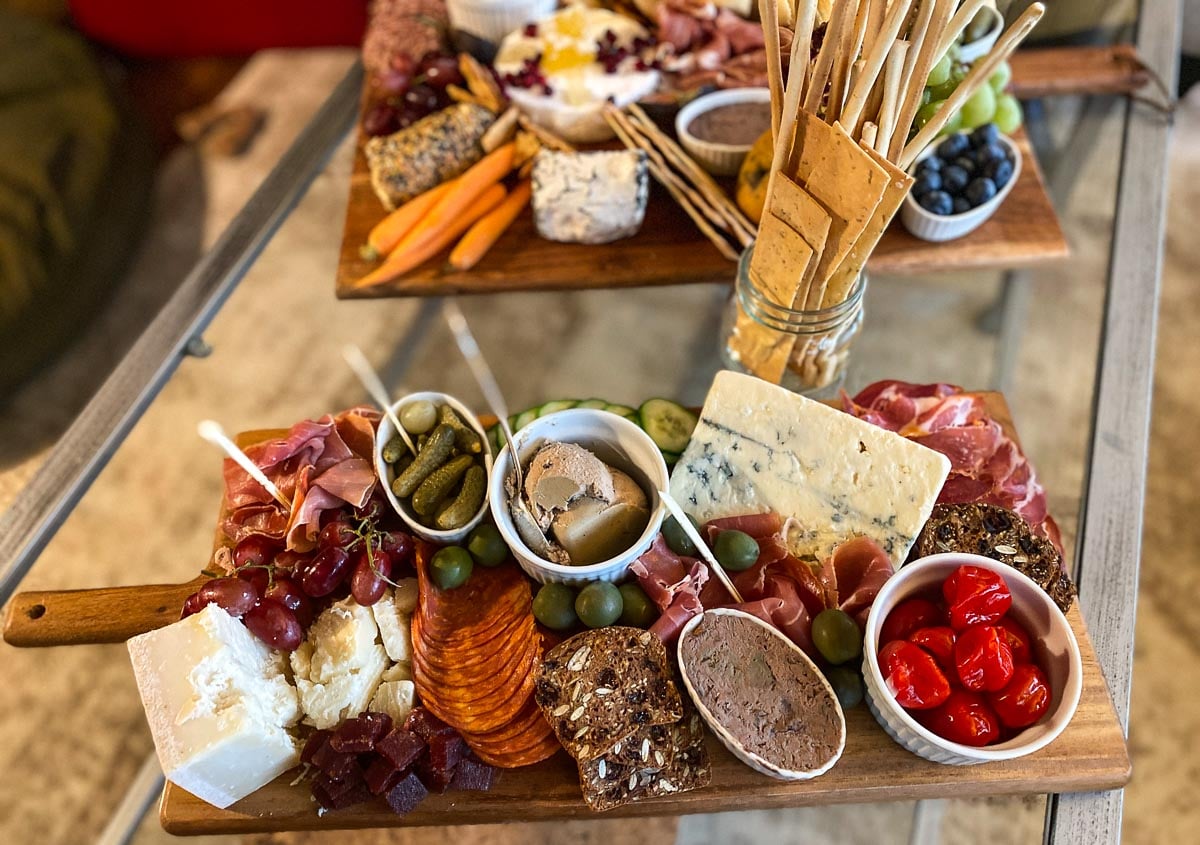
Frequently Asked Questions
The word charcuterie (shar-ku-trie; or as many English speakers say: shar-COO-ta-REE) derives from two French words: “chair” meaning “flesh,” and “cuit” which means “cooked.” The charcuterie is the physical place where charcuterie, the products, are made. Sort of like how “terrine” can refer to a ceramic dish, as well as what it holds inside.
In the present common vernacular, charcuterie refers to various cured and prepared meat products like sausages (mortadella, chorizo), salami (coppa, Genoa, sopressata) hams (like prosciutto, speck, jamon Iberico), bacon, terrines, galantines, rillettes, pâtés, ballotines, and confit. The person who makes these products is the charcutier.
Charcuterie can be divided into three different types: sausages, forcemeats and salumi. Sausages are ground meats stuffed within a casing, which are cooked or dry-aged. Forcemeats are soft, spreadable mixtures like pâtés and confit. Salumi are whole cuts of meat, like a whole prosciutto (leg of pork).
A charcuterie board is a presentation of a variety of these meats. A charcuterie board typically does not include cheese. This has become something of a sore spot with trained chefs and culinarians when they see things labeled as a charcuterie board all over social media that have quite a bit of cheese. This is why we call our recipe a charcuterie and cheese board.
It is typical with a charcuterie and or cheese board to offer additions such as mustards, mostarda, cornichon pickles, olives and the like. Cheese boards also often offer fruit, and this is why you can see in our images that there’s a little bit of everything.
This is a broad question with a broad answer. Some is, such as a traditionally prepared prosciutto (pork and salt only), and some might not be, like a pâté that contains onions and/or garlic. Some salami is, and some is not, but this doesn’t mean that you cannot offer both low and high FODMAP items.
That is because, in this sort of situation, we do not have to be concerned with “cross contamination” that might happen due to FODMAPs. Most people do not have this degree of sensitivity. You do have to read labels of purchased products and/or pay attention to any recipes you are creating so that you know which of the offerings are low FODMAP and proceed accordingly for anyone who is following the diet.
To begin with, remember that proteins are naturally low FODMAP, so the main ingredient in charcuterie, which is usually pork or another protein source, is fine. What you want to look at are the additional ingredients. Salt and any kind of preservatives are low FODMAP. Where it gets tricky is when it comes to high FODMAP ingredients such as onion or garlic, natural flavors and spices.
Now is a good time to review our article on How To Decipher “Natural Flavors” and “Spices” on Labels. First of all labeling rules differ from country to country so there is no catchall statement; our article addresses the US, Canada, Europe and Australia. In the US, for instance, garlic and onions cannot be “hidden” under the term “spices”.
One thing that is consistent is that ingredients will be listed in order from greatest to smallest. Remember that fact, along with the fact that the diet is low FODMAP, not no FODMAP – and also that everyone’s sensitivity and tolerance is different.
This is how some items like Worcestershire sauce are considered low FODMAP even though they contain garlic (refer to our article on Condiments). The amount is small enough to be considered below the threshold that would trigger symptoms in most people. So, if you find a salami, for instance, that contains garlic, but it is one of the last ingredients, it could be that a small serving size would be tolerated. Please review our article, Ask The Right Question: Is It Low FODMAP vs. Can I Tolerate This? Always eat to your personal tolerances.
Many cheeses are low FODMAP. And given the fact that there are over 500 cheeses to choose from in the world, there’s a lot of cheese out there that can be compliant, even for the Elimination Phase. The low FODMAP diet is not dairy free; it is lower in lactose. Firm cheeses such as cheddar, Parmigiano Reggiano, brie, camembert, Swiss, mozzarella, and even chevre (goat cheese), have quite generous low FODMAP serving sizes. Some softer cheeses have smaller serving sizes but can still be enjoyed on the low FODMAP diet. Our article, Is Cheese Low FODMAP? teaches you how to tell if any cheese is low FODMAP, so it is definitely worth the read. Feeling industrious? Make our Cheese Ball!
We have an article about condiments that covers basic American condiments such as mustards, ketchups, mayonnaise etc. Here we will address some condiments that are more pertinent to the charcuterie and cheese board:
* Olives – Green and black olives are low FODMAP in 60 g portions (about ½ cup)
* Pickles – Read labels carefully and review the Monash University and FODMAP * Friendly apps. There are many types of pickles to choose from – including pickled onions!
* Mustards – Dijon and coarse ground mustards are a nice low FODMAP addition.
* Hot pepper jelly – While hot pepper jelly itself has not been lab tested as of this writing, the ingredients are low FODMAP (hot peppers, sugar, pectin and maybe vinegar and salt).
* Fruit jams – Both raspberry and strawberry jams and marmalade have lab tested low FODMAP serving sizes. Experiment with other kinds as well.
* Honey – Low FODMAP in 7g portions.
* Fruit – Use your Monash University and FODMAP Friendly apps for guidance, but consider grapes, berries, figs, pears and apples.
* Vegetables – Use your Monash University and FODMAP Friendly apps for guidance, but consider carrots, cucumbers and radishes.
* Dried fruit – Raisins (13 g) and dried cranberries (15 g) can make an appearance but use your Monash University and FODMAP Friendly apps to assess low FODMAP serving sizes of dried figs, dates, apricots, pears and more.
* Nuts – Use your Monash University and FODMAP Friendly apps for guidance, but consider almonds, walnuts, pecans, Brazil nuts – raw, toasted, salted or even candied.
* Fresh herbs – A sprig of fresh thyme or rosemary here or there is a nice touch.
We like to use a large wooden board, but you can use any kind of large platter. You can see in the photos that we ended up having such a plethora of ingredients that we added an additional smaller board. Bear in mind that the larger the board, the more items you will need to create the look you want, because abundance looks best; this can get expensive. Use more vegetables, fruit, bread and crackers to fill in spaces and ease the budget.
Look for ones with handles, and even slate can be very nice.
An assortment of small dishes and ramekins to hold some of the add-ons are very helpful. Set out small plates, napkins and maybe (fancy) toothpicks or small forks and knives. And of course, you need some serving implements, depending on what ends up on your board.
A charcuterie and cheese board is best served at room temperature, but many salamis and cheeses are best sliced cold, so plan accordingly.
There are many white and red wines that go very well with a charcuterie and cheese board, and luckily, they have generous low FODMAP serving sizes. Please refer to our article on Alcohol & The Low FODMAP Diet for specific information. We like whites such as Sauvignon Blanc and young Chardonnay; for reds try something fruity like Gamay or Pinot Noir. Many sommeliers will recommend something bubbly, as well, such as Lambrusco; there are both dry and sweeter types.
Feel free to offer non-alcoholic beverages as well, of course.
A charcuterie and cheese board can function as a light meal. We like to offer it as nibbles before a main meal at a large party. Once you make the charcuterie and cheese board, you’re done! No need for additional offerings.
This is going to depend on how the board functions. As we said above, it could be a light meal, in which case you need more food per person, or it might be part of a larger meal, in which case you will need less per person. Caterers and cheesemongers often recommend between 2-ounces (55 g) and 5-ounces (140 g) of food per person.
We don’t worry about buying too much – as we always find use for cheese and meats afterwards, in dishes we whip up in the following weeks. They certainly do not go to waste. And any condiments have a long shelf-life if stored properly. Try to buy what you will eat right away of fruits and vegetables, as they are more perishable.
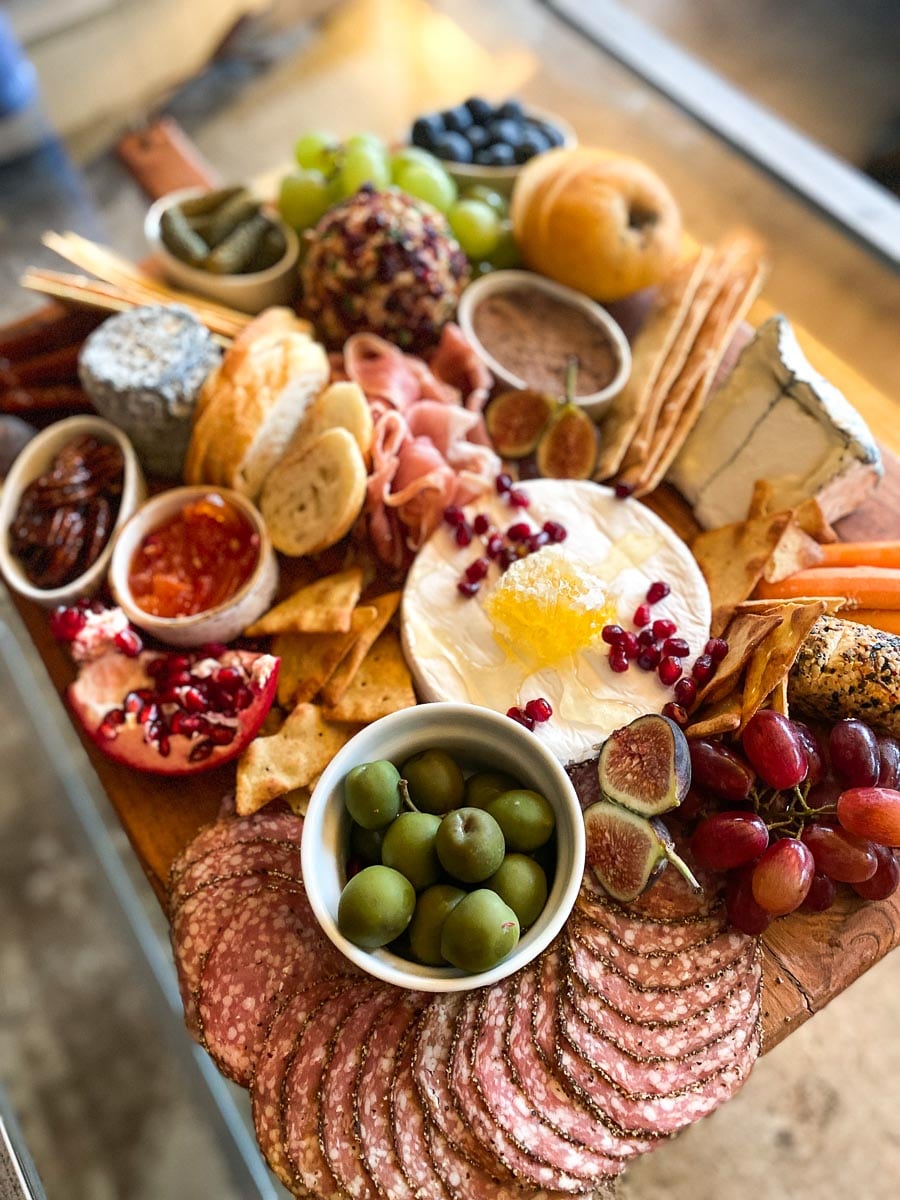
Shopping For Ingredients
You can certainly find all the ingredients that you need at a well-stocked supermarket, however, if you have a specialty store near you that specializes in cheeses, charcuterie and the like, we highly recommend that you shop there. This is because there will be cheese mongers and salespeople who are quite knowledgeable, and you can have a lively and enjoyable discussion about choosing your array of cheeses and meats. In general, you want to go for contrasting flavors and textures – and colors and shapes, too. A more diverse offering gives guests a broader range of options.
Here are some things to think about ahead of time:
- Offer an array of hard, semi soft, and soft cheeses.
- You might also think about having cow’s milk cheese, sheep’s milk as well as goat’s milk cheeses.
- Don’t forget about blue cheese, and maybe a triple creme.
- Think about shape as well: It is quite attractive to have rounds as well as wedges; you can find cheeses in the pyramids and logs; you can make cheeseballs; some cheese can be sliced, and some like Parmigiano Reggiano, can be crumbled.
- The same thing goes for your meats. Have some softer meats like prosciutto, which can be ruffled, and then also have harder salamis that can be cubed, sliced into rounds or half rounds, or laid out in a fan shape.
- Also, think about having a combination of milder meats, as well as ones with spicier, stronger flavors.
- When it comes to pâtés, you could offer one, or you could have a couple where one is smooth and the other is a course texture.
- Think about combinations of textures for bread and crackers as well. We will often offer slices of fresh baguette along with crispy crunchy crackers. There are also many different shapes of crackers available on the market these days so do not overlook rounds, squares, rectangles, and even triangles. And how about some long skinny breadsticks? If you want to get really DIY, you could try our Low FODMAP Cheese Crackers recipe. There are even crackers that have dried fruits and nuts within, which are a very nice addition.
- When it comes to the add-ons and condiments, again you want to think about contrast in flavor, texture, and also color. This is a chance to really add color from vegetables and fruits in particular.
- Nuts add crunch. Pickles add crunch as well as welcomed acidity. The sharpness and acidity from cornichon pickles and mustards complement fatty pâtés very well. Both green and black olives have generous low FODMAP serving sizes; just make sure they’re not cured with garlic or onion.
- Complement the tangy or spicy condiments with something sweet, like jams or quince paste. Quince paste (low FODMAP serving size of 13 g), or membrillo, is a classic Spanish accompaniment to hard, sharp cheeses like manchego. Some folks like it with softer cheeses, too, like brie or queso fresco.
- Raisins and dried cranberries are two types of dried fruit that have low FODMAPs serving sizes, but do not overlook dried figs or dates or other fruit that others might like, and/or that you might consider eating in very small portions. Always consult your Monash University app and FODMAP Friendly app for serving sizes.
- For fresh fruit, we highly recommend offering grapes, which have no FODMAP content, and fresh figs make a lovely addition. So do berries of all sorts.
Building Your Board
Truth be told, there really is no right or wrong way to do this but there are a few techniques that will help you achieve the look in these images.
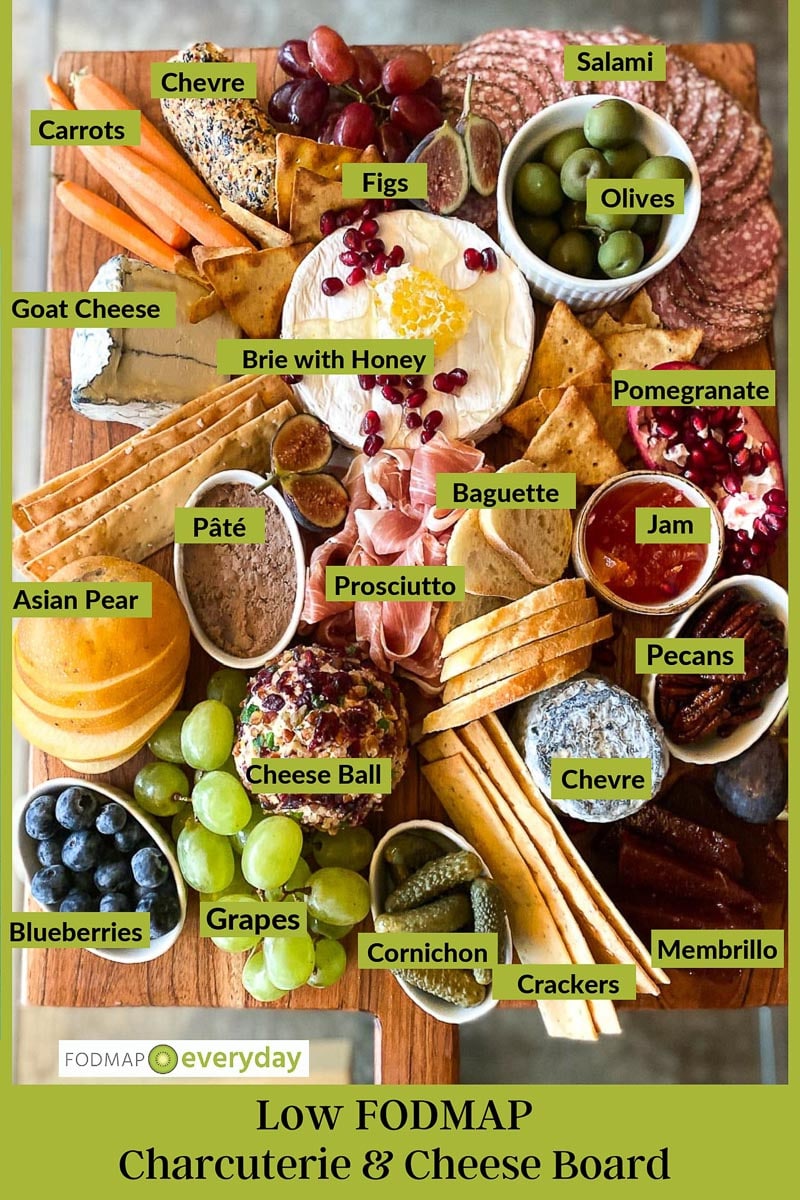
- Start with a few small dishes and ramekins placed here in there and fill them with suitable ingredients, like olives, pickles, nuts and condiments.
- Next, add the cheeses and the meats. They can nestle against the ramekins and flare out towards the edges of the board as well. Don’t worry about filling up all the spaces at this time.
- You can now add sliced bread and crackers to the plate here and there. We often find that it’s helpful to have extra bread and crackers alongside your main platter; there just always seems to be a need for more in relation to the amount of cheese and meats on the platter.
- Finish off with fresh fruit, dried fruit, and sprigs of fresh herbs if you like. Edible flowers would not be out of place.
- It is best to assemble your board as close to serving time as possible.
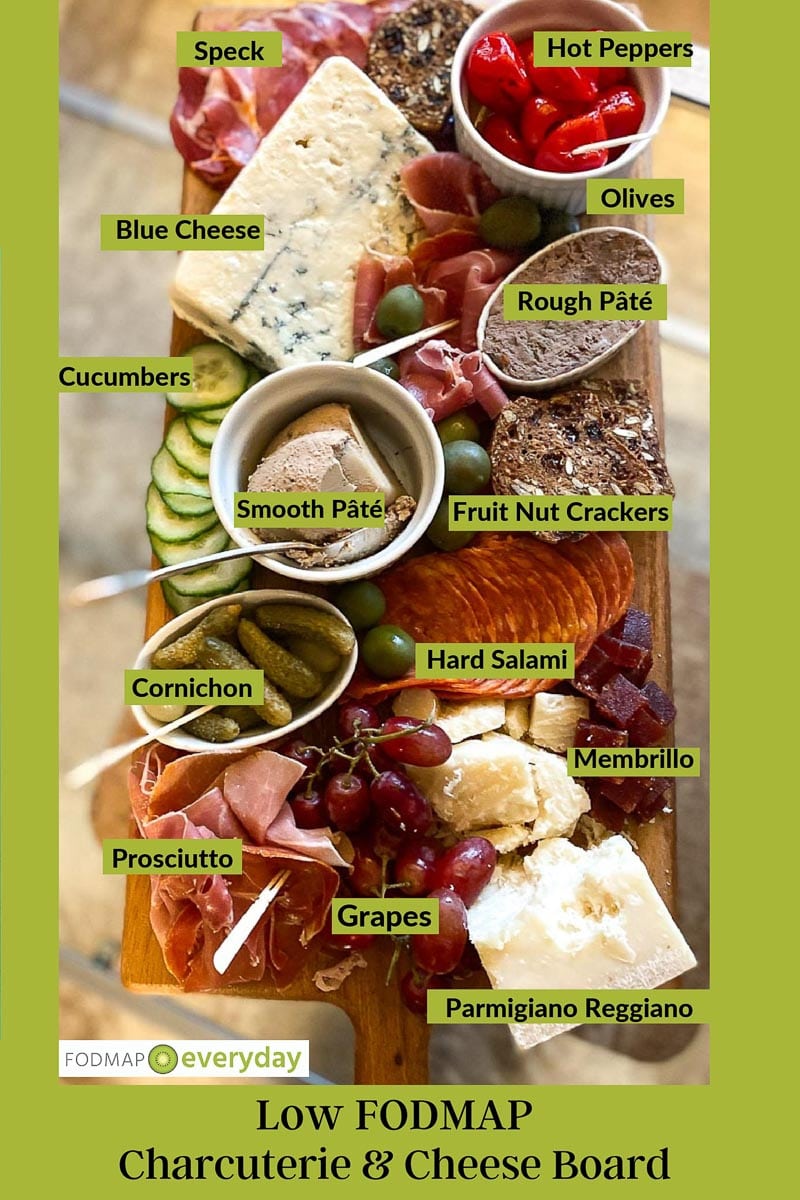
The Takeaway
You can enjoy charcuterie and cheese boards while following the low FODMAP diet. It does take some attention to detail; read labels of crackers and condiments and use your Monash University and FODMAP Friendly Low FODMAP Diet apps for guidance. Reviewing our articles on choosing bread, on cheese, on alcohol and about FODMAP Stacking will help immensely. The idea here is to be creative and to have fun making your board(s), even using some high FODMAP ingredients, since you can pick and choose and monitor your own selections. Start by eating lightly – and of course always eat to your own tolerance.
And since you are a cheese lover, be sure to see our round-up of our most beloved, cheesy recipes.
